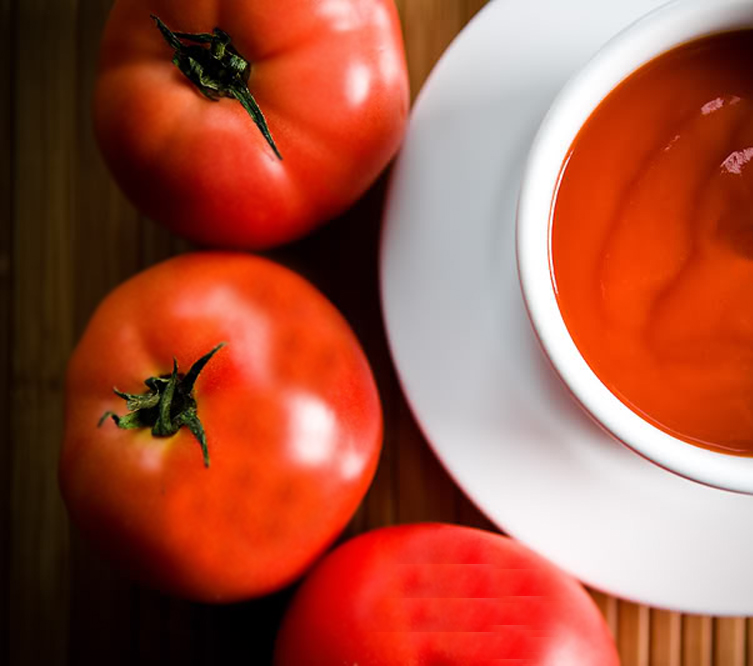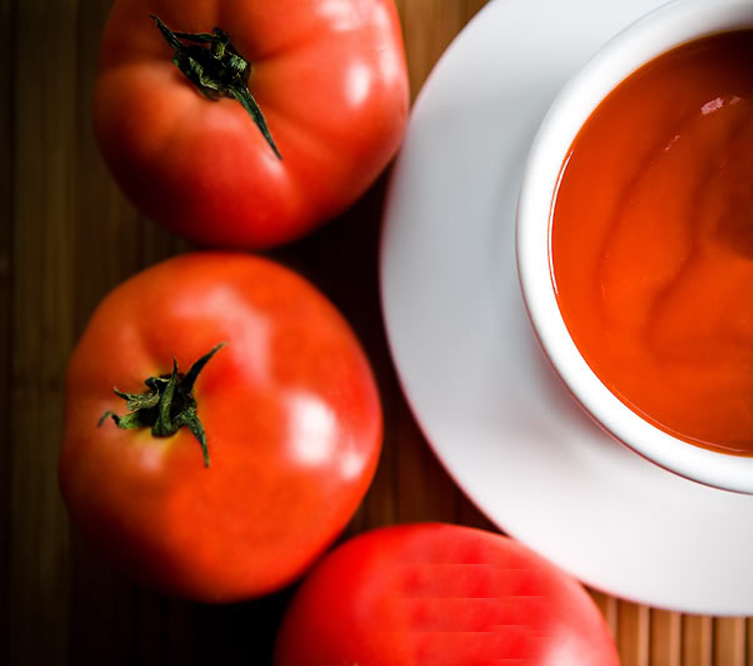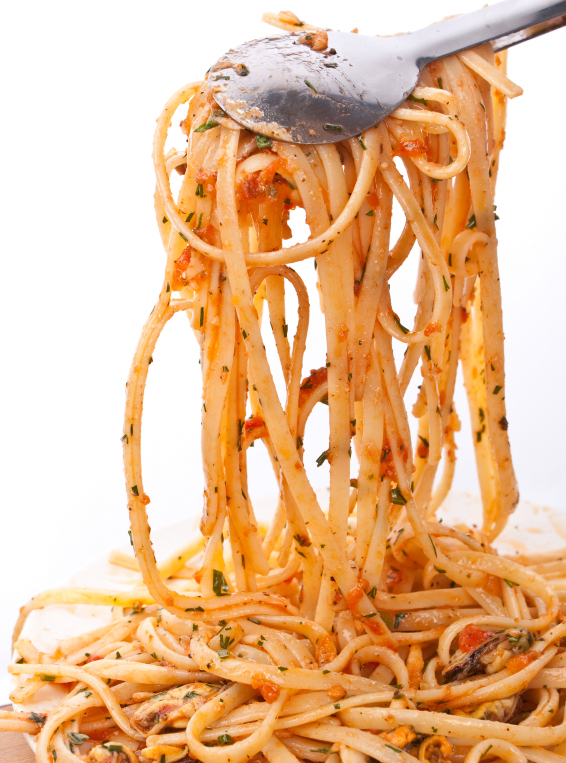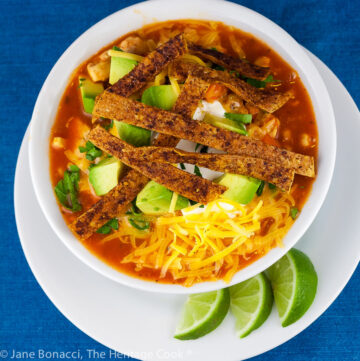Today’s story is “How I Learned to Make Spaghetti Sauce … oops, make that Pasta sauce!” When you join an Italian family one of the first things you learn is that there many types of pasta, what they are each called, and that you never refer to pasta as “spaghetti” unless it really is spaghetti! The Artist made the mistake once of asking for more “spaghetti” instead of pasta at a family dinner. He then got a thirty minute discourse on the various shapes and forms of pasta and the value of each. After all that he never did get his second helping!
I had made “spaghetti” sauce for many years, a meat sauce with hamburger like most people in America. When I married my Italian-American husband, I had to learn to make a marinara sauce. I stood next to my father-in-law at the stove and watched him make the family favorite. He makes his sauce with a lot of olive oil, a few cloves of garlic, and tomatoes. I took that information, put my spin on it and created my own version. I like to use less oil, add onions along with the garlic, and a little oregano or basil. Sometimes I’ll add a chopped bell pepper if I have one in the refrigerator and The Artist loves it when I add sauteed zucchini. Adjust this sauce to your own personal taste and discover a new family tradition.
When Italians refer to pasta sauce, it will invariably be marinara, a vegetarian sauce made with just tomatoes, garlic (or onions), olive oil, and sometimes basil. Most Americans typically pop open a jar or make a meat sauce with hamburger and way too much garlic. When Marinara is so quick and easy to make, uses inexpensive ingredients and tastes monumentally better than store-bought sauce, I don’t know why anyone would ever buy a cheap jar again.
There is also a difference in how the pasta is presented. Italians very lightly dress the pasta with sauce, toss it together, add a little more on the top and serve with freshly grated Parmesan cheese. My mother cooked the spaghetti (the only form of pasta we knew existed except for macaroni), put it on a plate and poured a large ladle of sauce over the top. I never knew it was supposed to be tossed and coated until I married The Artist.
During the summer when tomatoes are cheap and plentiful, I hit the farmer’s market and take home a whole box just to make sauce. The rest of the year I used canned tomatoes. For the most part I always prefer fresh or frozen vegetables to anything canned; tomatoes are one exception. Handled carefully and canned at the height of ripeness, canned tomatoes are amazingly flavorful and healthy. I always keep plenty in my pantry, ready for soups and stews, to make a pasta sauce or for adding to pot roast to enhance the flavors.
I love the “fire-roasted” variety and usually avoid the flavored versions, such as “basil added”, etc. preferring to add my own seasonings. My favorite brands are Muir Glen and Pomi, but you can use whatever is plentiful in your stores. On the rare occasions when they go on sale, I stock up. I use the large cans to make sauce or soup and the smaller cans for additions to other recipes. On those nights when I can’t figure out what to make for dinner, I can have a plate of pasta with fresh sauce on the table in less than 30 minutes.
In the heat of summer when tomatoes are plentiful, you can use them all on their own or in addition to the canned tomatoes. If you do this, you will want to blanch them lightly and then remove the skins. If you leave the skins on, they curl up and get tough and chewy. Before you blanch them, cut a small “X” on the bottom of each tomato. This allows the water to get under the skin more easily. Drop them into boiling water for about 1 minute, remove them with a strainer, and drop into a bowl of ice water to stop the cooking. This is called “shocking” the ingredients. The skins will now come off very easily.
You can also remove the seeds if you want, but this isn’t necessary. To do this cut each tomato in half horizontally (along the “equator”) and gently squeeze the seeds out. Chop the tomatoes so they break down more easily as the sauce cooks. Be aware that fresh tomatoes have much more liquid in them that will need to be boiled off. I usually add some tomato paste to intensify the flavor and help thicken the sauce.
You may find it odd that I include a teaspoon of sugar in the recipe. Sugar, along with the salt and herbs, helps balance the acid content of the tomatoes, taking the “bite” out of it. It is optional, but I find that when I include it, the sauce tastes more rounded. Most of the time I use good quality dried herbs, but use fresh if you can find them. I add my dried herbs in the beginning of cooking so they can bloom in the heat and diffuse their flavor throughout the dish. Fresh herbs lose their flavor during cooking, so you want to add them right at the end and use them for a garnish. They add a bright pop of flavor as you dive into the dish.
Once the sauce is made, it is endlessly flexible. You can lightly sauté some vegetables like zucchini or yellow squash and toss them into the pot. You can bake meatballs and serve with pasta. Use this sauce with Chicken or Eggplant Parmesan or lasagna. It works on pizza, bruschetta, and can be made into a tomato soup. Add a little to chicken stock and create the base for either a Minestrone or Tortilla soup.
If The Artist has a stressful day, nothing soothes his soul like a big plate of pasta! It is most definitely his comfort food. This isn’t exactly the sauce he grew up eating, but it still eases his tension and always puts a smile on his face. Try this simple sauce and I bet it will become a tradition in your family too, whether you have an Italian heritage or not!
Kitchen Skill: Cutting a Chiffonade of Herbs
Chiffonade is a fancy French term for slicing something, often herbs, into thin ribbons. Stack leafy vegetables or herbs and roll into a tight “cigar” or leave flat. Using a very sharp knife, thinly slice the “cigar” crosswise. Shake the pieces loose to create a beautiful confetti-like garnish.


- 2 to 4 tbsp olive oil
- 1 medium onion, diced
- 1 to 2 cloves garlic, peeled and halved lengthwise (remove the bitter center)
- 2 tsp dried basil
- 2 tsp dried oregano
- 2 large cans (28 oz each) crushed tomatoes (I like Muir Glen or Pomi)
- 1 large can (28 oz) diced tomatoes with the juices
- 1-1/2 cups red wine – if you prefer not to use wine, add water instead
- 1 tsp each salt and freshly ground black pepper
- 1 tsp sugar
- 10 to 12 fresh basil leaves, optional
- Grated Parmesan cheese
- In a large Dutch oven or deep heavy-bottomed pot, heat oil over medium heat. When oil is shimmering carefully add onions. Stir to coat evenly with oil. Cook, stirring occasionally until onion is softened and translucent, but not browned, about 3 minutes. Stir in garlic, dried basil, and oregano. When you can smell the garlic, but before it browns, add tomatoes and wine. Add salt, pepper and sugar; stir to combine. Bring to a boil. Reduce heat to medium-low or low and let sauce simmer slowly for at least 30 minutes and up to 1-1/2 hours. Add water if sauce becomes too thick. Remove the garlic pieces if desired. If you like a chunky sauce, serve as is, or purée for a smoother consistency. Taste and adjust seasonings.
- Near the end of cooking, stack basil leaves and slice horizontally into very thin strips. Stir half into the sauce and use rest for garnish.
- Put pasta into well-salted boiling water. Drain when just slightly underdone. Remember, there is carry-over cooking and adding hot sauce to the pasta will continue to cook it. Toss pasta with a little sauce, put in a warmed serving bowl, sprinkle with some Parmesan cheese, and remaining basil.
- Yield: about 8 to 10 servings
Thank You!










Jessica
How many fresh tomatoes do you use for this recipe? And do you seed and peel?
Jane Bonacci, The Heritage Cook
I never measure exactly how many, but if you weigh them, it would be about 4 lbs. If you are using tomatoes with tough skins, then I would suggest running the mixture through a food mill to remove them and most of the seeds. Some fresh tomatoes are sometimes quite watery. In that case I often add some tomato paste to thicken the sauce a bit. Let me know if you have any other questions I can help you with.
The Food Hound
I never make my own sauce, yikes!! I have a favorite jarred brand but I guess that’s my only excuse. This looks awesome- clearly I need to attempt!
Jane Bonacci, The Heritage Cook
Oh, you really should try it. It is incredibly easy and SO much more delicious than anything jarred. You will thank me to your dying day, LOL!
Jeanette
I agree, there’s nothing like homemade sauce, no matter which version – so much more flavorful!
Jane Bonacci, The Heritage Cook
And it is so easy to do! Give it a try!
Katrina
I can’t imagine why people buy jarred sauce either! I SO much prefer making my own and it IS so easy. Growing up, my mom would make lots of sauce and ladle it into freezer bags also. Such a good idea!
Jane Bonacci, The Heritage Cook
Hi Ladies! It really is a shame that more people don’t try making their own sauce. It is so easy and fast! I am always happy to hear when people do. @Katrina – your mom was smart, having frozen bags of sauce in the freezer makes my life so much simpler on busy days!